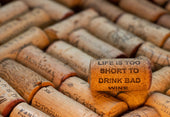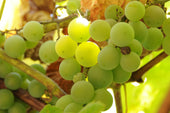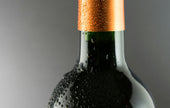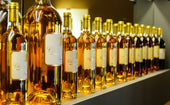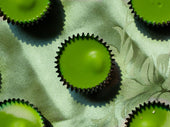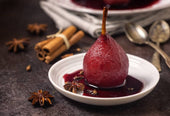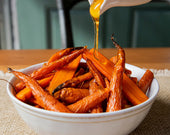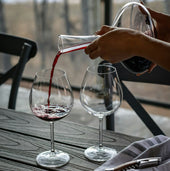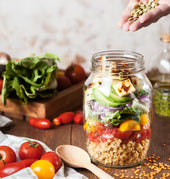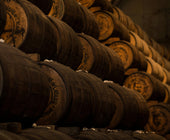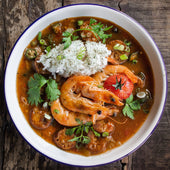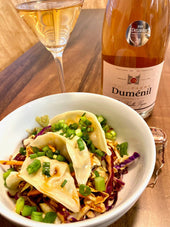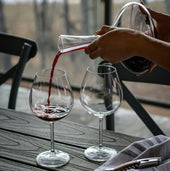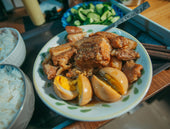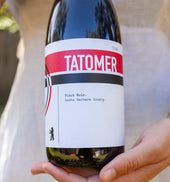
Making Rosé: The Flavor’s in the Details

Rosé is Summer in a bottle. This refreshing light-bodied wine has become dramatically popular of late. There are a myriad of rosés from hard-candy-like confections to ethereal, whispering wines as pale as a ballet slipper. Knowing how rosé is made can help you decide which one suits you.
WHAT IS ROSE? All rosés derive their tell-tale pink hue from red grapes fermented with minimal or no skin contact. Flavor profiles include notes of red fruit, flowers, citrus and melon with a bright, crisp finish. They can be dry—meaning they have little or no sugar, or they can have residual sugar adding a more succulent flavor, such as blush wines like White Zinfandel.
Southern France is considered the home of rosé, having made the refreshing pink stuff since Roman times. Classic French rosés contain Grenache, Cinsault, Mourvedre, Syrah and Carignan varietals. But, rosé can be made from any single red varietal or blend of grapes, depending upon the taste of the winemaker.
Winemakers have a number of methods to choose from when making rosé. Most rosés begin in the vineyard where grapes are grown specifically to become rosé wine. These grapes are harvested a bit earlier than red wine grapes to keep the sugars low and acidity high. But, some winemakers decide after harvest to make a rosé as a delightful second product of red wine production.
DIRECT PRESS—THE LIGHTEST TOUCH. Direct press results in the palest pink and most delicately flavored rosés. Sometimes they are romantically termed vin gris (“vahn gree”)—with the very unromantic translation of “gray wine”. Direct Press is used when making rosé from very dark-skinned grapes, such as the classic Bordeaux grapes used in our Rustenberg Stellenbosch Petite Verdot Rosé. This method is similar to white winemaking where grapes are de-stemmed, crushed and the juice is immediately drawn off and finished in stainless steel or neutral oak. The pink tint of the final wine results from skin contact during the crush. Direct press rosés can also have a citrus tanginess to them, such as our AIX Coteaux d’Aix-en-Provence Rosé.
MACERATION—GIVE IT A SOAK. Maceration involves soaking lightly crushed grapes in a bin to extract color and flavor notes from the skin, stems and seeds. A technique used in red winemaking, Rosé maceration is much shorter — from just a few hours to a few days. Once the desired color is achieved, the juice is pressed, then goes through fermentation like a white wine. Bottle Shop’s Figuiere Magali Cotes de Provence Rosé and Maison Saleya Coteaux d’Aix-en-Provence Rosé each have short periods of maceration.
SAIGNEE—THE “TWO-FOR-ONE” The saignée method is a by-product of red wine making. Saignée means, literally, “to bleed.” In this case, part-way through maceration, a portion of the juice is drained off and fermented separately as a rosé. The rest goes on to become red wine.
Saignée gets a bad rap as an “afterthought” rosé method. But, the more vibrant pink color and darker flavors of blackberry, raspberry, and berry jam, can be worth it. These rosés are an attractive chilled wine sure to please red wine fans.
ARE THESE METHODS REGIONAL? Most French rosés are made through the direct press or maceration method. But, in the Loire Valley, the Chinon AOC winemakers use the sagniée method to create a cherry pink and gently spiced rosé of Cabernet Franc. Saignée is more common in the US and Australia, where you’ll find rosés of Shiraz, Cabernet Sauvignon and Pinot Noir.
THE HUE IS A CLUE: Selecting a rosé to suit your tastes should not induce anxiety. A rule of thumb: Palest pink rosés are probably direct press, correlating to lower alcohol, floral and strawberry notes and higher acidity. As the shade deepens, longer maceration times yield more berry notes from raspberry and blackberry. The deepest fucsia, watermelon or cherry-colored rosés are most likely sagniée. In addition to dark berry flavors, they will have more spicy and herbaceous notes relating to the red version of their parent grape, be it Cabernet Sauvignon, Syrah or Pinot Noir.
 Patty Lyn Tweten is a writer, graphic designer and vineyard owner. She is also a devoted fan of rosés having helped her husband make their own with the sagniée method. Instagram Linkedin
Patty Lyn Tweten is a writer, graphic designer and vineyard owner. She is also a devoted fan of rosés having helped her husband make their own with the sagniée method. Instagram Linkedin






